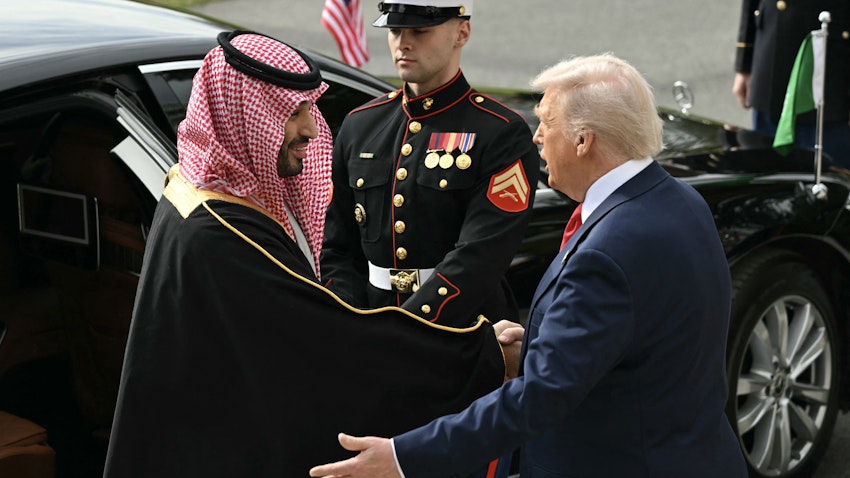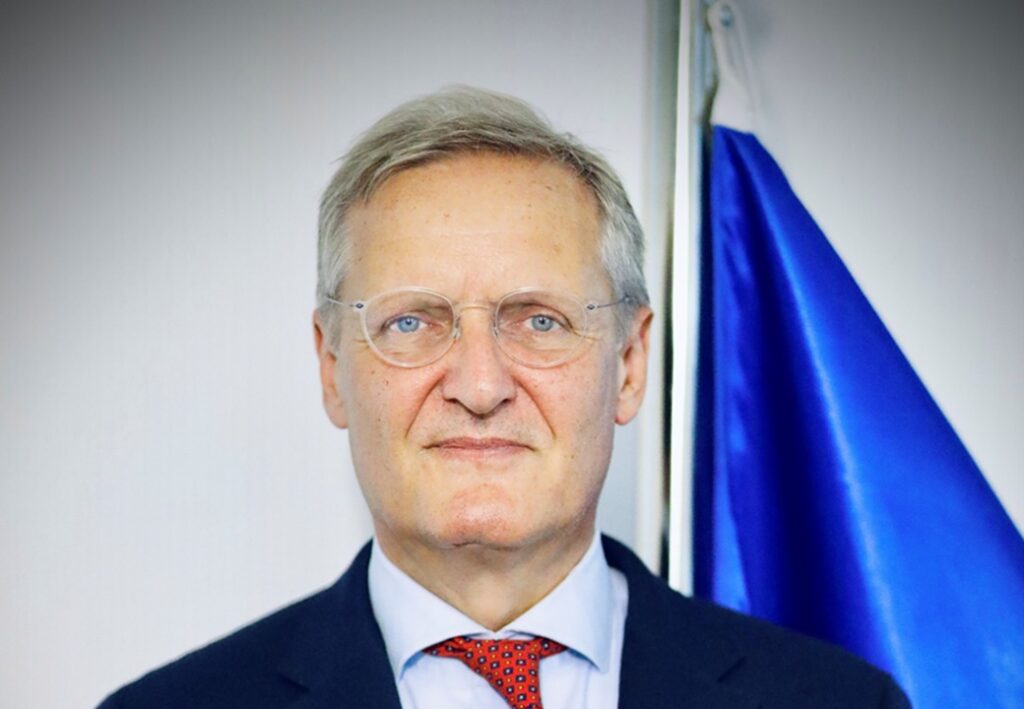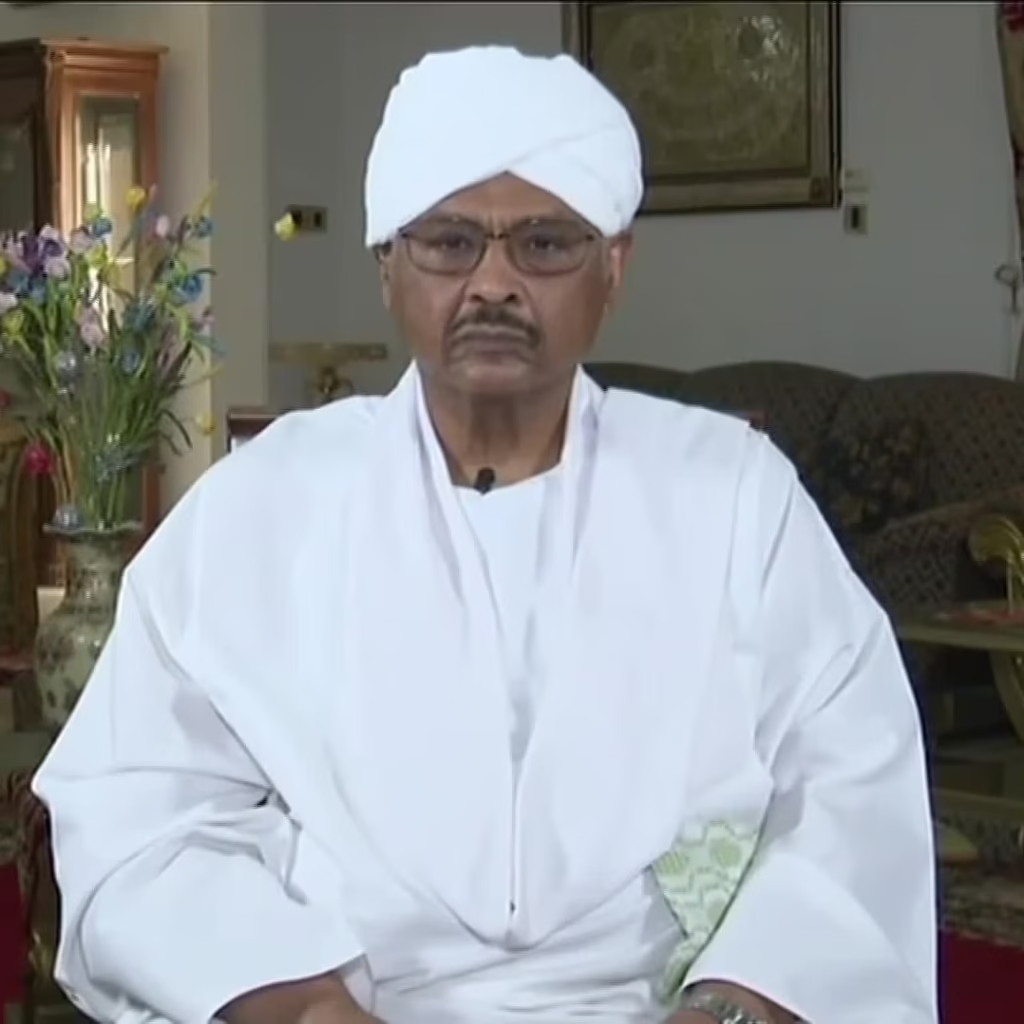
On 19 November 2025, Washington became the stage for a surprising diplomatic turn over Sudan. During the U.S.–Saudi Investment Forum, with Saudi Crown Prince Mohammed bin Salman sitting in the front row, U.S. President Donald Trump said his administration would now get directly involved in trying to end Sudan’s war. He called the conflict a “tremendous humanitarian crisis” and openly acknowledged that he hadn’t really focused on it before, until the crown prince personally pushed him to take it on.
What really drove this sudden about-face by the SAF camp and its ideological allies? This analysis argues it did not stem from a late embrace of peace or a surge of humanitarian concern, but from three simultaneous “earthquakes” that upended Port Sudan’s calculations:
- The military earthquake: the dramatic fall of El-Fashir, the state’s last major stronghold in the west, and the strategic unravelling that followed.
- The geopolitical earthquake: Donald Trump’s return to the White House with a “big deals” and “settling scores” mindset, posing an existential threat to the Islamists and a potential umbrella for the SAF.
- The economic earthquake: Port Sudan’s near-total fiscal collapse and inability to finance the war effort, leaving Saudi financial lifelines as almost the only option.
In the sections that follow, the analysis breaks down these shifts — examining the battlefield realities of November 2025, the contours of the emerging U.S.–Saudi deal, the influence of Trump’s newly appointed envoys, and what all of this could mean for Sudan’s political trajectory.
Geopolitical context: The “big deal” and shifting priorities in Washington
To understand Sudan’s sudden prominence, one has to start not in Port Sudan or Darfur, but in the Oval Office and the Kennedy Center in Washington.
In strategic terms, Sudan was not the main course; it was an “attached security item” on the menu of a historic investment and defence package between Washington and Riyadh.
Engineering the new U.S.–Saudi alignment
Mohammed bin Salman’s November 2025 visit to Washington was not ceremonial. It capped a long negotiation over rewriting the U.S.–Saudi strategic partnership.
The package featured:
• Saudi investment commitments in the U.S. on the order of up to $1 trillion, centred on AI, data centres, industrial projects and capital markets.
• Defence deals including F-35 fighter jets and advanced systems.
• Civil nuclear cooperation and high-end technology and AI partnerships.
Within that landscape, MBS put Sudan squarely on the table. For Riyadh, Sudan is hard security, not charity. With long stretches of Sudanese coastline opposite Saudi mega-projects like NEOM and much of the kingdom’s Red Sea tourism corridor, Riyadh cannot afford a failed state or rogue militias entrenched on the opposite shore.
Components of the U.S.–Saudi deal and their link to Sudan
| Strategic component | Details (Nov 2025) | Link to Sudan file |
|---|---|---|
| Investment | Up to $1 trillion in U.S. investments, AI, infrastructure | Translates into massive Saudi leverage over White House choices |
| Regional security | New security architecture for Red Sea and Gulf | Requires a stable Sudanese coastline for shipping and tourism |
| Nuclear / tech cooperation | Civil nuclear deals, AI and data partnerships | Elevates Saudi Arabia as regional “manager” of nearby crises |
Trump’s doctrine: Peace as personal brand
Trump has long sought headline-making, camera-friendly “peace deals” that burnish his image, even with an eye to a Nobel Prize. Sudan fit that template: a horrifying but relatively “manageable” war where regional allies can carry much of the weight – unlike the more complex theatres of Ukraine or Gaza.
His frank line – “It was not on my charts to be involved in that” – reveals the underlying dynamic: Washington is acting in Sudan with Saudi priorities, Saudi framing and Saudi urgency, but under an American presidential seal. For Burhan and his camp, that signalled that Sudan was no longer just a mid-level State Department file; it now carried direct presidential weight – and Trump’s personal pride
The military earthquake: El-Fashir’s fall and changing rules of engagement
The political reversal in Port Sudan cannot be separated from the military disaster that preceded it. In late October 2025, after an 18-month siege, the city of El-Fashir – historic capital of Darfur and headquarters of the 6th Infantry Division – fell to the Rapid Support Forces (RSF).
The fall of El-Fashir shattered the SAF’s attrition-based doctrine.
• Loss of sovereign presence: El-Fashir was the last major symbol of “state sovereignty” in Darfur. Its fall effectively handed the RSF control of the region’s five states, allowing them to claim real authority over nearly half of Sudan’s territory.
• Opening the logistics corridor: El-Fashir had functioned as a cork blocking full-scale logistical flows from western borders (Chad, Libya) into central Sudan. Its fall opened long-range supply routes, enabling the RSF to feed its war effort in Kordofan and White Nile more effectively.
• Threat to Kordofan: Forces freed from the El-Fashir siege began moving east toward an arc of towns – an axis that places Kordofan between two jaws and threatens to cut off White Nile and Northern states.
Atrocities and moral pressure
Yale’s Humanitarian Research Lab and satellite imagery have documented mass killings, summary executions and targeted atrocities by RSF units in and around El-Fashir after the takeover, adding to earlier warnings of ethnic cleansing in Darfur.
• Social panic: These reports triggered shock and fear among communities that traditionally support the SAF in northern and central Sudan.
• Collapse of confidence: The SAF’s failure to break the siege – despite airdrops and repeated promises – eroded confidence among civilians and rank-and-file soldiers in the high command’s ability to deliver.
A ceasefire stopped being just a “Western demand” and became, in SAF-held areas, a popular demand to stave off similar catastrophes in cities like El-Obeid or Kosti. In that context, endorsing the Trump initiative offered military leaders a way to defuse anger and, at least temporarily, freeze a deteriorating battlefield.
The Islamists’ calculus: Bending to survive Trump’s storm
Perhaps the most complex piece of this puzzle is the Sudanese Islamist movement’s embrace of a plan fronted by Trump and Mohammed bin Salman. Their warm welcome reflects a form of existential pragmatism by a current facing possible extinction.
Islamist leaders – notably secretary-general Ali Karti – know that Trump carries a deep ideological hostility to political Islam; during his first term, his team seriously explored designating the Muslim Brotherhood as a terrorist organization.
• Smart sanctions so far: Before Trump’s return, the U.S. Treasury had already sanctioned the al-Bara bin Malik Brigade and its commanders, along with Ali Karti himself, for obstructing democratic transition.
• The nightmare scenario: Under Trump, this could escalate from targeted sanctions to a full Foreign Terrorist Organization listing of the broader movement. That would freeze assets worldwide, criminalise support networks, and potentially expose key figures to drone strikes as “legitimate targets” under U.S. counter-terrorism doctrine.
• The strategy: By greeting the Trump–MBS plan, Islamist leaders are trying to pre-empt that outcome – laundering their image as a “national” force backing stability and peace, rather than a radical spoiler. It is a way of signalling: “We are part of the solution, not the enemy.”
The manoeuvre to isolate the UAE
Statements from the Sovereign Council and Islamist-aligned voices have showcased a clear tactic: lavish praise on Saudi Arabia and the U.S., while continuing to demonise the United Arab Emirates and reject its place in the Quad.
• Driving a wedge: The aim is to exploit any divergence between Riyadh and Abu Dhabi. By accepting Saudi leadership on Sudan, Islamists hope Riyadh will either restrain Emirati support to the RSF or at least generate frictions within the Quad that slow or dilute measures unfavourable to them.
• Lobbying in Washington: In parallel, congressional voices have been pushing to designate the RSF as a terrorist organisation and pressuring the UAE over alleged arms supplies. Islamists see Trump – via MBS – as a channel to apply “hard” pressure on Abu Dhabi in a way Biden’s team did not.
After more than two and a half years of grinding conflict, Islamist fighting formations such as the al-Bara bin Malik and al-Bunyan al-Marsous brigades are heavily depleted.
A three-month humanitarian truce offers:
• Time for rest, re-organisation and retraining
• Opportunity to repair supply lines and rebuild stocks
• Space to re-shape propaganda narratives without front-line pressure
The mediator and the mechanism: Musad Boulos and the 3+9 roadmap
A new “fixer” has emerged at the centre of the Trump-era Sudan file: Musad Boulos, Trump’s adviser on Arab and African affairs and a member of his extended family circle. He represents a different style of U.S. diplomacy – personal, transactional and heavily reliant on back channels.
Reports suggest that Boulos has engaged in intensive, often deniable contacts – including possible meetings with Burhan in Cairo or via regional intermediaries.
• Language of interests: Instead of the traditional vocabulary of “human rights” and “democracy,” Boulos and the Trump team speak in terms of “stability,” “counter-terrorism” and “economic interests” – language far more comfortable for Sudan’s generals.
• Reciprocal conditions: Leaks suggest Burhan demanded action to choke off foreign support – chiefly Emirati – to the RSF, while Boulos pressed for curbing Iranian influence and reining in the most hardline Islamist actors in exchange for broader recognition.
The roadmap being floated by Boulos and the Quad rests on a simple timetable:
• 3-month humanitarian truce
– Nationwide ceasefire
– Opening of humanitarian corridors
– Freeze on major military redeployments
• 9-month political process
– Sudanese–Sudanese talks
– Aimed at forming a civilian transitional government
The trap, from Port Sudan’s perspective, lies in the second phase. Burhan and Islamist strategists calculate they can accept the three-month pause to reap its benefits, while later bogging down the nine-month political track in disputes over participation criteria, the RSF’s future and transitional justice – effectively hollowing out the initiative without immediately confronting Trump.
Economic and humanitarian collapse: The hidden driver
Behind the military and diplomatic manoeuvring lies a devastating economic reality pushing Port Sudan toward almost any exit ramp.
The central government has lost more than half its public revenues and foreign exchange sources.
• Oil shock: Pipeline damage and refinery shutdowns have slashed transit fees from South Sudan’s oil and halted Sudan’s own exports, undermining the state’s ability to pay salaries, purchase weapons and secure fuel.
• Saudi lifeline: Saudi financial and in-kind support has become critical to maintaining minimal services in relatively stable states. In this context, saying “no” to a request personally delivered by MBS would amount to financial suicide and risk complete institutional collapse.
Famine fears and looming UN action
The UN has described Sudan as the world’s largest humanitarian crisis, and famine conditions have been documented in places like Zamzam camp, with stark satellite imagery of mass graves and scorched villages in Darfur intensifying scrutiny.
• Chapter VII pressure: There were growing fears that, if obstruction continued, the UN Security Council could resort to Chapter VII mechanisms for forced humanitarian access.
• Tactical acceptance: Endorsing a U.S.-branded initiative centred on a humanitarian truce allowed the Port Sudan authorities to defuse the immediate risk of coercive intervention, while retaining at least symbolic sovereignty.
Future scenarios: Peace, frozen conflict, or implosion
From the foregoing analysis, three main trajectories emerge for what this acceptance could produce.
In this scenario, Trump and MBS succeed in imposing the initial three-month truce.
• The SAF uses the pause to train fresh units, repair air assets and construct layered defensive lines to shield eastern and northern states.
• The RSF consolidates administrative control in the territories it holds – Darfur, parts of Kordofan and Gezira – and rationalises its chain of command.
Even if the political process later stalls or collapses, the truce would create a new reality of de facto partition: two rival centres of power controlling different slices of Sudan, with reduced direct front-line combat – a configuration similar to Libya’s dual government model.
Optimistic scenario: Grand bargain
If Trump wields genuinely heavy sticks against spoilers – sweeping sanctions, legal designations, even targeted strikes – and if Saudi Arabia offers a “Marshall Plan”-style reconstruction carrot, a more far-reaching settlement is conceivable:
• Safe exits and guarantees for top commanders on both sides
• A technocratic, Gulf-backed civilian government
• A long-term, phased security sector process to reconfigure and eventually integrate forces
But this would likely require the marginalisation of hardline Islamist “hawks,” risking internal rupture within the army camp.
Worst-case scenario: Internal explosion
Conversely, Burhan’s acceptance of the initiative – especially if it involves concessions to the RSF – could trigger rebellion among Islamist combat units such as al-Bara bin Malik, or among ideologically driven junior officers. To them, a truce could look like betrayal of El-Fashir’s dead and other “martyrs.”
This, in turn, could:
• Split the SAF from within
• Spark political assassinations
• Tip Sudan into a more chaotic, multi-polar conflict that no external initiative could easily contain.
Burhan and the Islamist movement’s embrace of the Trump–MBS initiative in November 2025 is less a moral awakening than a survival tactic. They are boxed in on all sides:
• Militarily, by the fall of El-Fashir and the cascading strategic risks.
• Politically, by Trump’s return with a record and rhetoric hostile to political Islam and a willingness to strike deals over their heads.
• Economically, by near-bankruptcy and dependence on Saudi largesse.
• Diplomatically, by intensifying global outrage over atrocities and famine.
The state brain-trust in Port Sudan appears to have concluded that the era of “playing the internationals off against each other” has ended with the arrival of Trump the bulldozer, backed by the region’s deepest pockets in Riyadh. Acceptance is, for them, a way to buy time, dodge terrorist designation, and try to script the next act from inside negotiating rooms rather than have it imposed from outside.
But Sudan’s history teaches that “buying time” often precedes even more violent rounds of conflict, unless backed by solid, enforceable guarantees and a serious regional and international mechanism that goes beyond good intentions and giant investment deals.
Risk–opportunity matrix for the SAF and Islamists in accepting the initiative
| Element | Opportunity (potential gains) | Risk (potential threats) |
|---|---|---|
| 3-month truce | Reorganise forces, halt Kordofan’s deterioration, ease popular anger | RSF entrenches control on the ground; restive rank-and-file fighters |
| U.S. (Trump) role | International legitimacy, possible sanctions relief, isolating the UAE | Terrorist listing if process fails; externally imposed solutions |
| Saudi (MBS) role | Financial rescue, Red Sea security guarantees, Port Sudan’s survival | Total policy dependence on Riyadh; Sudan becomes bargaining chip |
Whether this moment marks the beginning of the end of the war, or merely a new chapter in Sudan’s long, bloody book of manoeuvres, will depend on how these risks and opportunities are managed in the months ahead.




